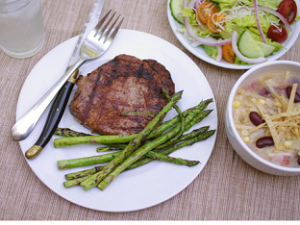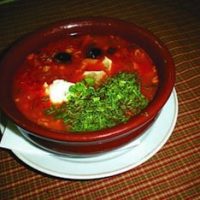 We’ve all been there; you’re sitting at a restaurant and thinking, \»Why am I spending so much? I can make this at home!”
We’ve all been there; you’re sitting at a restaurant and thinking, \»Why am I spending so much? I can make this at home!”
So, the next time you get a craving, instead of taking the whole family out, just make the dish yourself and you will save a ton. I\’m going to show you how to calculate the cost of a meal, save money, and make the decision to eat at home that much easier:
1. Calculate prices. Although ingredient prices change over time, just start with the prices you’ve paid recently to begin to estimate what your meals cost. Include the cost of condiments or seasonings, within reason. Don’t worry about a pinch of salt, but you want to know that a casserole topping like fried onions cost $3. It is helpful to start a running list of standard ingredients. Break the list into categories that include the item cost, number of units, and cost per unit. This reference guide will save you time. Budget Bytes has a great step-by-step guide on how to calculate your meal costs.
2. Standby meal. A simple spaghetti supper is a perfect standby meal. Use Strategic Shoppingprinciples and purchase staple items on sale or with a coupon. You can dine on the standby meal for about a third of the cost of what you would have to pay for a last-minute trip to the store. Ground beef can be purchased on sale and stocked in the freezer. Use coupons for pasta and sauce and store in your pantry. Chop your own lettuce for the salad and substitute flour tortillas broiled with cheese and cut into wedges instead of more the expensive bakery French bread.
3. Swap in substitutions. When I first started tackling my family’s grocery budget, I began cutting unimportant ingredients or swapping them with less expensive options to bring the cost down. As long as I used good recipes, my family did not realize that some of their favorite meals were in the \»ultra-budget” category. Some examples include: saving over 50 percent on substitutions such as bouillon cubes instead of a can of chicken broth, and reconstituted lemon or lime juice instead of juice from the fruit itself. You can crush your own cornflakes; make your own breadcrumbs or croutons.
4. List your family\’s favorites. I work foods that offer the greatest nutrition at the lowest price into my family’s regular diet. I hope you will use this list as inspiration to start creating your family’s list of cheap, nutritious \»Greatest Hits.” We like green cabbage, romaine lettuce, carrots, spinach, green peppers, fresh or frozen broccoli, bananas, 1%milk, beans, lentils, fresh chicken and turkey, eggs, canned tuna, brown rice, and whole wheat pasta. Apply strategic shopping and you can get some of these items free or close to it by using coupons.
5. Incorporate cheap superfoods. For an item to make my Cheap Superfoods list, it needs to be both cost effective and healthy. Chicken breasts — at 60 cents per 4-ounce serving with 2 cents per gram of protein — are at the top of my list. Of course we do enjoy steak on occasion, but we eat chicken or other healthy bargain options far more frequently.









